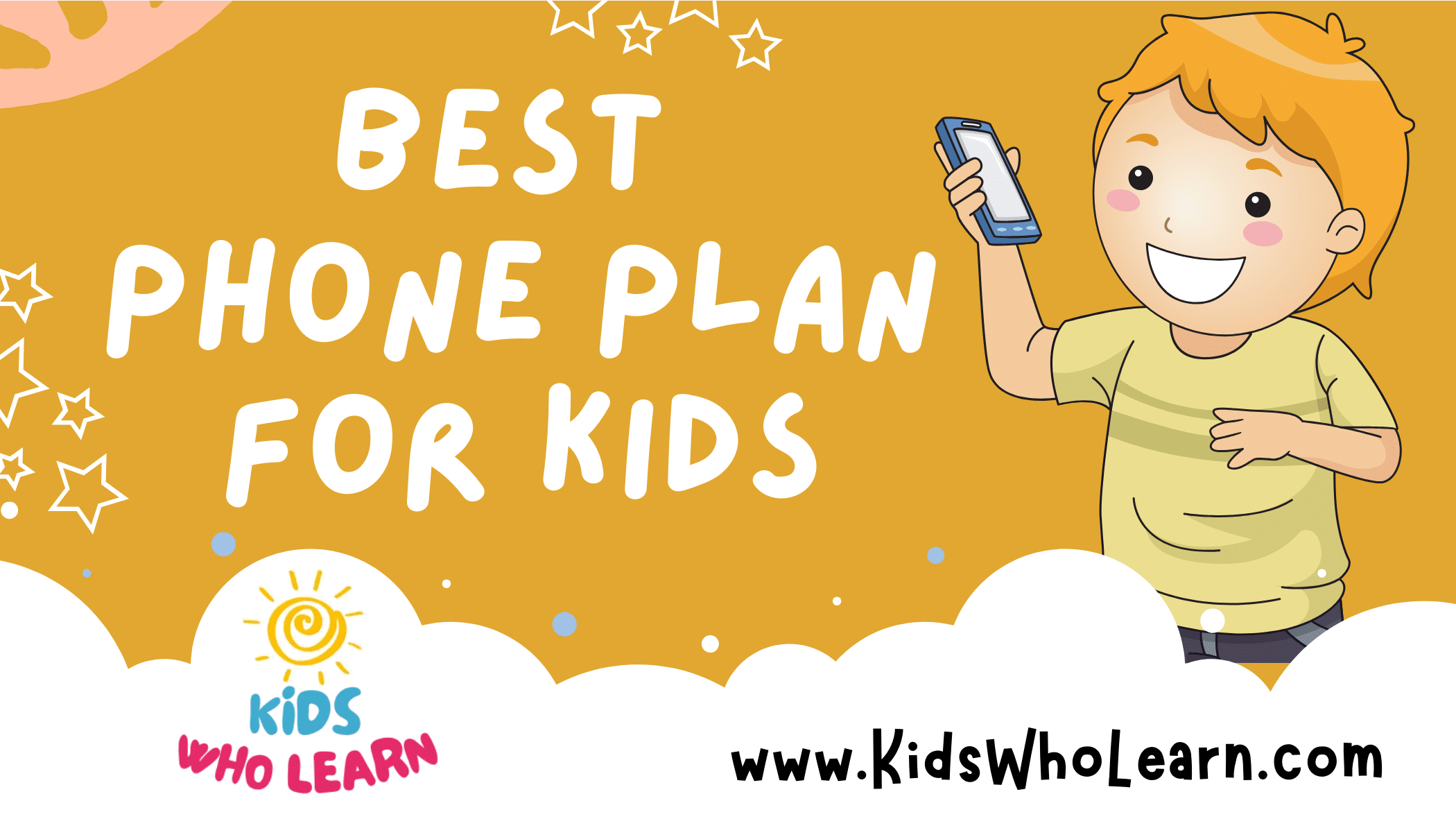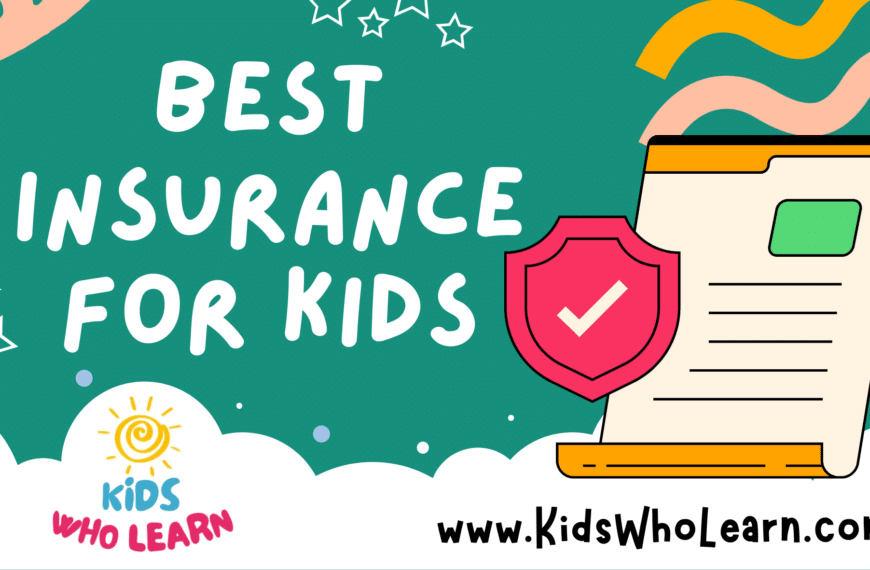Selecting the best phone plan for a child is a critical decision for parents and guardians. Not only does it involve considerations around cost and usage, but it also includes deliberating over safety features and appropriate device selection. With the vast array of carriers and plans available, understanding the nuances can be overwhelming, yet finding a plan that aligns with both a child’s needs and a family’s budget is essential.
When considering phone plans for kids, parents should evaluate the benefits of family plans, which often offer cost savings and shared data allocations. Special features designed for children’s safety, such as location tracking and content filters, should also be weighed. Moreover, understanding the plan features and perks that come with various options will guide parents toward a choice that offers a balance of freedom for their kids and peace of mind for themselves.
Key Takeaways
- Evaluate family plans for savings and shared benefits.
- Prioritize safety features in your child’s phone plan.
- Balance cost with essential features and device suitability.
Understanding Phone Plans for Kids
When selecting a phone plan for your child, it’s essential to strike a balance between connectivity and control. The right plan will provide enough data for their needs while including features that promote safety.
Importance of Choosing the Right Plan
When you’re choosing a phone plan for your child, consider their specific needs. Data usage, text, and call limitations are all important variables. For instance:
- Limited Data Plans: Useful for ensuring your child doesn’t exhaust their monthly data allowance too quickly.
- Unlimited Text and Calls: Offers peace of mind knowing your child can always reach out to you.
It’s crucial to examine the coverage area of the cell phone provider to ensure your child will have a signal in the locations they frequent most.
Parental Controls and Safety Features
Parental controls are a significant aspect of kids’ phone plans. Look for plans that allow you to:
- Monitor usage and set limits.
- Block inappropriate content.
Safety features may include:
- Location tracking: Keeping tabs on your child’s whereabouts.
- Emergency contacts: Ensuring they can always reach family or emergency services.
Providers often tailor packages with a combination of these controls, giving you a hand in your child’s digital safety.
Comparing Carrier Options
When choosing the best phone plan for your kids, it’s important to understand the difference between major carriers and Mobile Virtual Network Operators (MVNOs), as well as the network coverage and reliability they offer.
Major Carriers Vs. MVNOs
Major carriers like Verizon, AT&T, and T-Mobile own and operate their own network infrastructure. These carriers often provide extensive nationwide coverage and are at the forefront of deploying 5G networks. They offer a variety of plans, which may include family packages that are ideal when adding multiple lines for your kids.
On the other hand, MVNOs such as Ting, Tello, Mint Mobile, Visible, US Mobile, Metro by T-Mobile, Consumer Cellular, Boost Mobile, and the now-defunct Sprint (merged with T-Mobile) use the network infrastructure of the major carriers to provide their services. MVNOs typically offer more affordable, flexible plans without long-term contracts, which can be very suitable for a child’s phone plan.
Network Coverage and Reliability
| Carrier | Network Used | 4G LTE Coverage | 5G Availability |
|---|---|---|---|
| Verizon | Own | Nationwide | Yes |
| AT&T | Own | Nationwide | Yes |
| T-Mobile | Own | Nationwide | Yes |
| Ting | T-Mobile/Sprint | Nationwide | Yes |
| Tello | T-Mobile | Nationwide | Yes |
| Mint Mobile | T-Mobile | Nationwide | Yes |
| Visible | Verizon | Nationwide | Yes |
| US Mobile | Verizon/T-Mobile | Nationwide | Yes |
| Metro by T-Mobile | T-Mobile | Nationwide | Yes |
| Consumer Cellular | AT&T/T-Mobile | Nationwide | Selective |
| Boost Mobile | T-Mobile | Nationwide | Selective |
Network reliability is critical, particularly when your child needs to reach you. You want to ensure that the phone plan you choose offers robust 4G LTE coverage to maintain consistent connectivity. Major carriers typically have the edge in terms of network reliability, yet many MVNOs also offer dependable coverage that benefits from the infrastructure of these bigger networks. Always confirm 5G availability in your area, as it can significantly increase internet speeds, which might be beneficial if your child’s phone usage includes data-heavy activities.
Family Plan Advantages
When choosing the best phone plan for kids, family plans offer cost-effective solutions and simplified account management. The structure of a family plan ensures that everyone stays connected affordably and efficiently.
Shared Data and Discounts
Family plans typically include shared data options, which means that data is pooled among all lines on the account. This setup can be especially cost-efficient if you’re considering a family plan with four lines or more. Here’s a breakdown of potential savings:
- Two Lines: Save on individual plans by sharing data; perfect for families starting to grow.
- Four Lines or More: Substantial discounts per line, often with promotional deals for even greater savings.
Most family plans come with unlimited talk and text as a standard feature, ensuring that no extra charges will appear on your bill for calls or messages.
Multi-Line Management
With a family plan, you have the convenience of managing all lines under a single account. This centralized management makes it easier to keep track of usage and bills. Here are other benefits:
- Single Bill: One bill for all lines, reducing paperwork and simplifying payments.
- Mix and Match Plans: Some providers allow you to tailor services for each line, ensuring that each family member gets exactly what they need without paying for unnecessary extras.
By using a family plan, your mobile service experience becomes streamlined, making it a suitable choice for keeping your kids connected.
Special Features for Kids’ Safety
In selecting a phone plan for kids, safety features are a non-negotiable priority. Parental controls and location tracking ensure that your child’s digital environment remains secure and you can monitor their whereabouts.
Content Filters and Location Tracking
Parental control apps are essential for regulating the content accessible to your child. These apps enable you to filter out inappropriate content and set boundaries on what they can view. Verizon’s Smart Family app is a noteworthy option as it integrates content filters seamlessly.
- Content Filters: Restrict access to adult content or websites you deem inappropriate for children.
- App Permissions: Limit the use of certain apps that might not be suitable for their age.
Additionally, location tracking is a critical feature for your peace of mind.
- Real-time Location: Track your child’s phone location in real-time.
- Location Check-Ins: Set up automatic check-ins at specific locations like home or school.
Usage Monitoring and Screen Time Management
Managing how and when your child uses their phone is crucial for their overall well-being.
- Screen Time: Set limits on phone use during homework time or bedtime.
- Call & Text Limits: Monitor who they call or text and set boundaries on their communication.
With these tools, like Verizon Smart Family, you can easily set and adjust these parameters directly from your phone:
- Activity Reporting: Obtain detailed reports on your child’s phone usage and online activity.
- Time Restrictions: Designate times when phone usage is allowed or restricted to encourage healthy habits.
By utilizing these features, you can create a safer and more controlled phone experience for your child.
Cost Considerations for Parents
Choosing the right phone plan for your child involves balancing cost with the benefits provided. Your focus should be on finding a plan that is both economical and meets your child’s communication needs.
Budget-Friendly Choices
When looking for a budget-friendly phone plan, consider pay-as-you-go options as they allow you to control the monthly cost effectively. Plans that offer a set amount of data and minutes can often be affordable, with rates as low as $10 to $20 per month, depending on your service provider. Here are some points to consider:
- Pay-As-You-Go: Pay only for the minutes and data your child uses.
- Prepaid Plans: No long-term commitment with a clear cap on monthly spending.
- Family Plans: Adding a line for your child can be cheaper than individual plans.
It’s essential to monitor deals from providers, as special promotions can lead to significant savings.
Understanding Plan Pricing and Extras
Grasping the details of plan pricing ensures you choose a cost-effective option. Here are specific aspects to watch for:
| Feature | What to Look For |
|---|---|
| Monthly Price | Compare the monthly rates for basic services. |
| Extras | Avoid plans bloated with unnecessary add-ons. |
| Data Allowance | Look for plans with affordable unlimited data options to avoid overage fees. |
| Hidden Fees | Check if taxes and fees are included in the advertised price. |
Remember, while unlimited data plans may seem expensive upfront, they can prevent unexpected charges and provide the best value in the long run.
Plan Features and Perks
Choosing the right phone plan for your kids involves considering their data needs and the perks that can enhance their mobile experience. These plans often come with a mix of essential features and additional bonuses, tailored to suit the younger audience.
Data and Connectivity Options
When selecting a plan, data and connectivity are paramount. Providers offer a range of options:
- Unlimited Data Plans: Ideal for streaming or gaming, these plans ensure your kids won’t run out of data.
- Unlimited Talk and Text: Essential for staying in contact, many plans offer unlimited talk and text within the country.
- High-Speed Data: Look for plans with 4G or 5G to guarantee swift browsing and video playback.
Here’s a quick comparison:
| Plan Name | Data | High-Speed Data | Hotspot Data | International Data |
|---|---|---|---|---|
| Just Kids Plan | 5GB | At reduced speeds after 5GB | Included | Not Included |
| Unlimited Plus Plan | Unlimited | Up to 50GB high-speed, then reduced speeds | 15GB | Included |
| Essentials Plan | Unlimited at slower speeds | Not Included | Not Included | 2G speeds abroad |
| Visible Wireless Party Pay Plan | Unlimited | Unlimited high-speed | Unlimited (capped speed) | Not Included |
Entertainment and Extra Perks
Beyond data, phone plans can come with extras that might interest your kids:
- Streaming Services: Some plans bundle services like Netflix, which can be a valuable addition.
- Cloud Storage: Plans like Do More offer cloud storage options, ensuring your kids never lose important photos and documents.
- Games: Access to exclusive games through the carrier’s app or a partnership can be a highlight.
Here is an overview of what to look out for:
- Wi-Fi Connectivity: Plans providing access to nationwide Wi-Fi hotspots can be handy for conserving data.
- Parental Controls: Essential for monitoring usage and content, allowing you to manage screen time and access.
Remember, these features should align with your family’s needs and usage patterns. Each plan comes with its own set of perks, so consider what would benefit your kids the most.
Selecting the Right Device
When choosing a smartphone for your child, focus on usability, durability, and appropriate features. Prioritize devices that offer a balance between technological needs and parental control capabilities.
Smartphone Choices for Kids
- Age Appropriateness: Younger children might do well with models that offer simple interfaces and robust parental controls.
- Durability: Look for phones that can withstand drops and spills; ones that are designed to be rugged or have a good track record of durability.
| Operating System | Options |
|---|---|
| Android | Samsung Galaxy A series, Motorola Moto E, |
| iOS (iPhone) | iPhone SE, used or refurbished models |
Accessories and Protection
- Cases: Invest in a sturdy case. Brands like OtterBox and Spigen offer excellent protection against drops and scratches.
- Screen Protectors: Tempered glass or plastic screen protectors are essential to shield the screen from cracks and scratches.
Remember to consider the phone’s size and ergonomics when selecting a case, ensuring it doesn’t hinder the device’s usability for your child.
Additional Considerations
When selecting the best phone plan for your child, it’s essential to consider how the plan might grow with their needs and the type of customer support available. These factors will ensure you select a plan that is both practical and sustainable for the long term.
Plan Flexibility and Future Scaling
Prepaid Plans
With a prepaid plan like Visible Wireless, you aren’t tied to a contract, giving you the freedom to adjust your plan as your child grows. Look for options that offer easy plan changes without penalty fees. If your child’s usage increases, a plan with scalable data tiers can be beneficial.
- Simple prepaid options
- Data adjustment: Scale up as needed
Family Plans
Consider party pay or family plans that allow multiple lines. As your child enters college or if you have other kids, these plans can offer savings through bundled services.
- Visible Wireless party pay plan
- Military and first responder discounts
- Combine lines for savings
Customer Service and Support
Accessibility
Choose a provider with a reputation for excellent customer support. Visible Wireless, for example, is known for its Customer Service, ensuring that help is available when you or your child needs it.
- Methods of support
- Online chat
- Phone support
Targeted Plans
Some carriers offer plans like Verizon’s Just Kids which are designed for children and come with built-in support and parental controls.
- Specialized support
- Tailored to children’s needs
- Parental control assistance
Conclusion
When choosing a phone plan for your child, prioritize safety features and cost-effectiveness. Here’s a quick summary:
- Prepaid Plans: Ideal for budget control and avoiding overage charges.
- Family Plans: Consider these for multiple devices, offering better value and shared data.
- Data Limits: Opt for plans with data caps to prevent overuse and additional charges.
- Parental Controls: Essential for monitoring and managing your child’s phone usage.
Remember, the best plan also depends on your child’s age and how they will use the phone. Be sure to review plan options regularly as your child’s needs change over time.
Frequently Asked Questions
When selecting a phone plan for kids, focus on features like parental controls, internet access options, and budget-friendliness.
What are the most suitable cell phone plans for high school students?
For high school students, you should consider plans that offer a balance between data allowances and parental control features, such as T-Mobile’s FamilyWhere or Verizon’s Smart Family plan which provide location tracking and content filters.
What are the options for kid-friendly cell phone plans in Canada?
In Canada, carriers like Koodo and Virgin Mobile offer prepaid and postpaid plans that can be capped for data usage to avoid overages, while Telus has a ‘Peace of Mind’ plan for kids, offering flexible parental controls.
How do spectrum mobile’s parental controls enhance child safety on their network?
Spectrum Mobile’s parental controls allow you to monitor and manage your child’s phone usage, including setting bedtimes, blocking inappropriate content and managing who they can call or text, thus enhancing their safety.
What are the features of AT&T’s phone plans that cater to children?
AT&T offers phone plans for children with features like Secure Family, which lets you block purchases, restrict data usage, monitor location, and filter content.
How does a phone without internet access benefit children, and what are the best options?
A phone without internet access can help minimize distractions and online risks for children. Good options include basic feature phones or devices designed specifically for kids, like the Relay screenless phone, which offers simple communication tools and GPS tracking.
What features should I look for in a phone watch designed for kids?
When considering a phone watch for kids, look for features like real-time GPS tracking, voice calling, and emergency SOS alerts. Durability, water resistance, and a user-friendly interface are also important for daily wear and ease of use. Brands like Verizon’s GizmoWatch and TickTalk offer these features.










